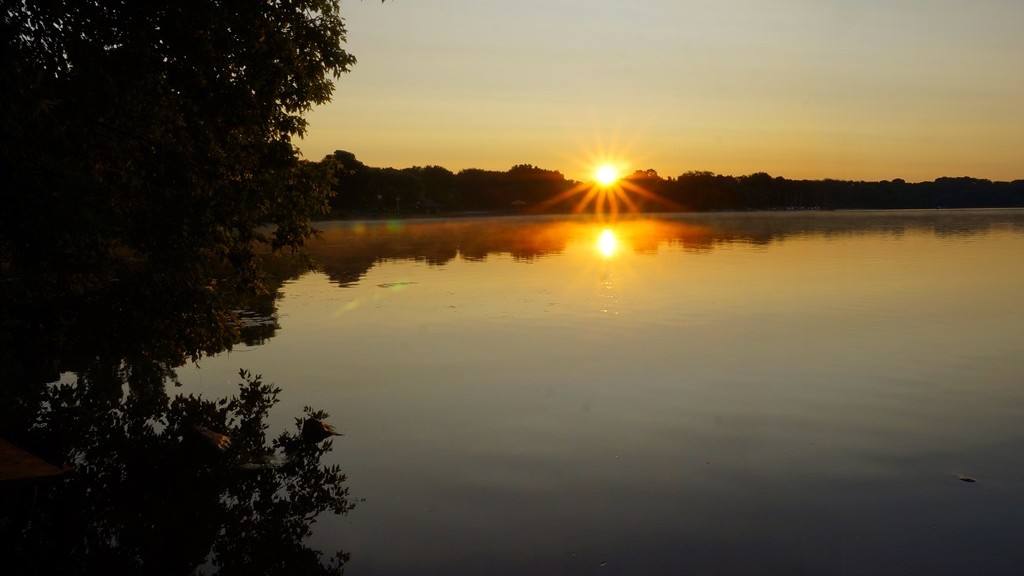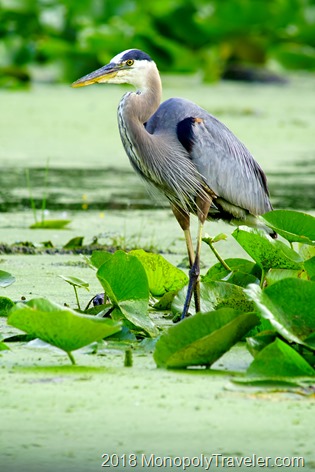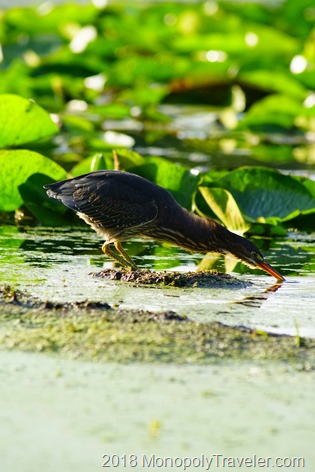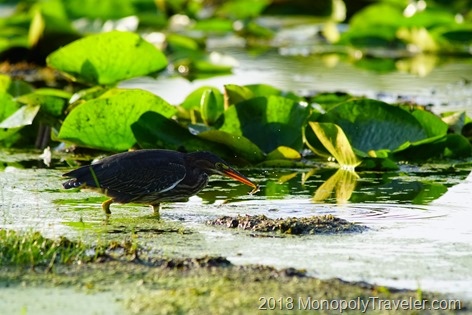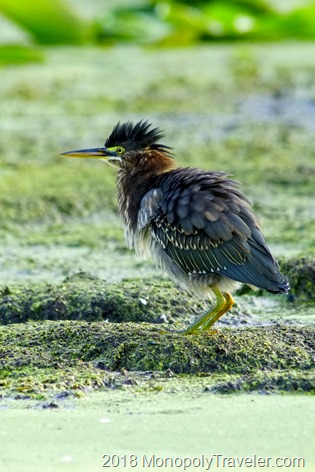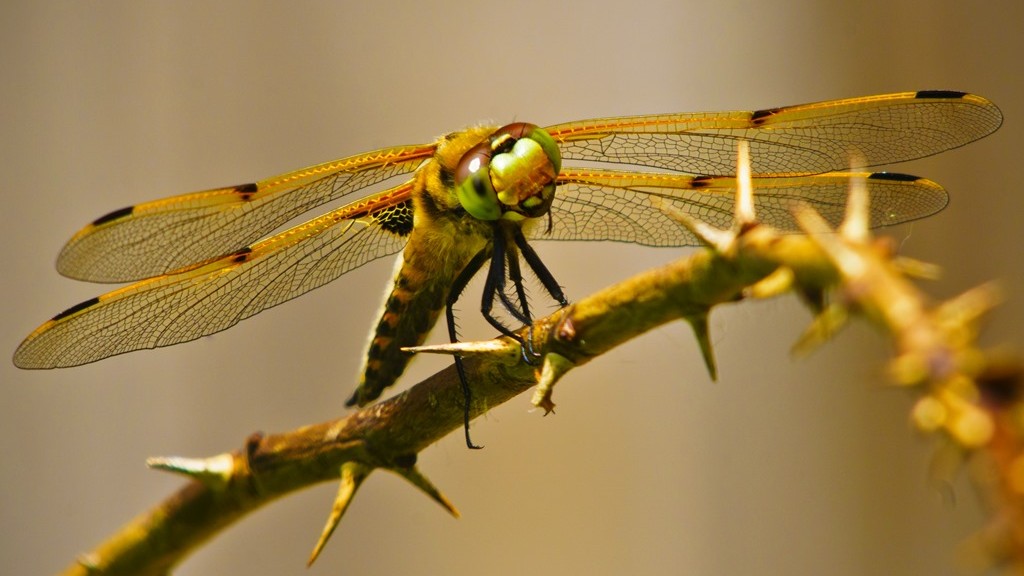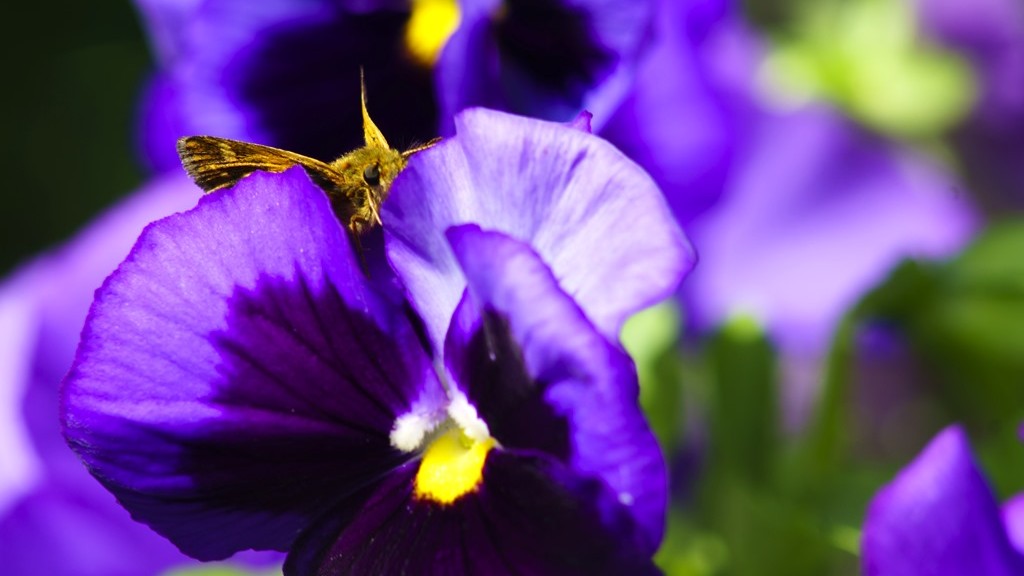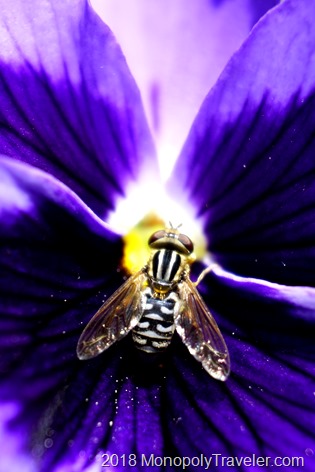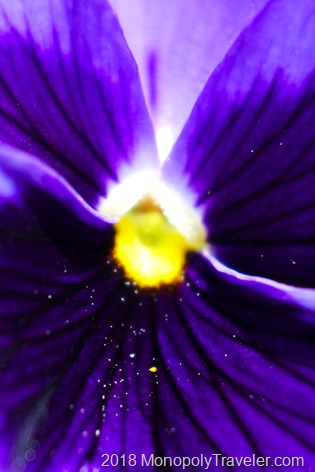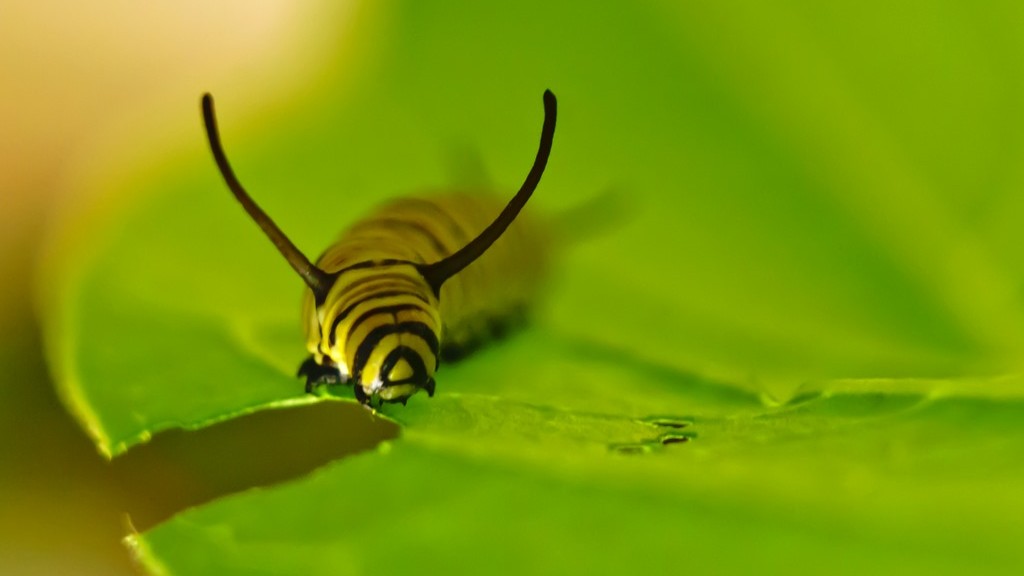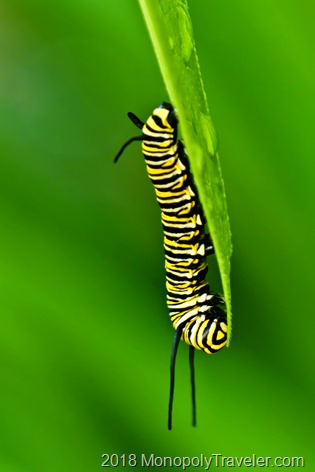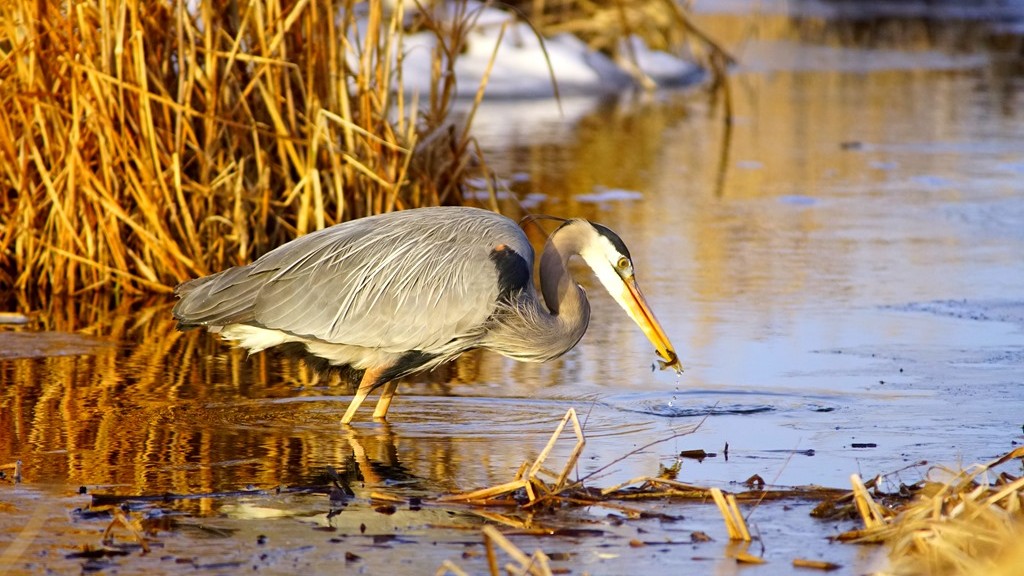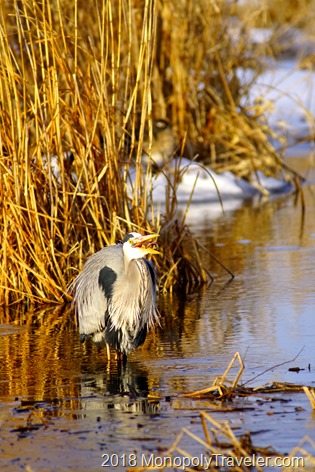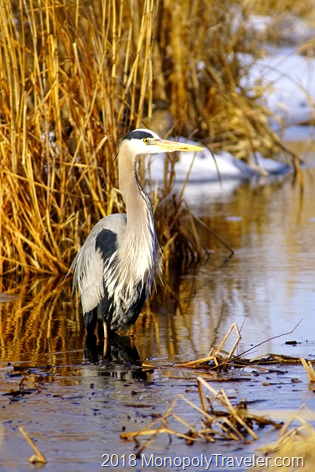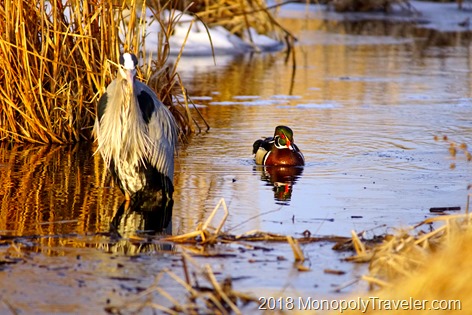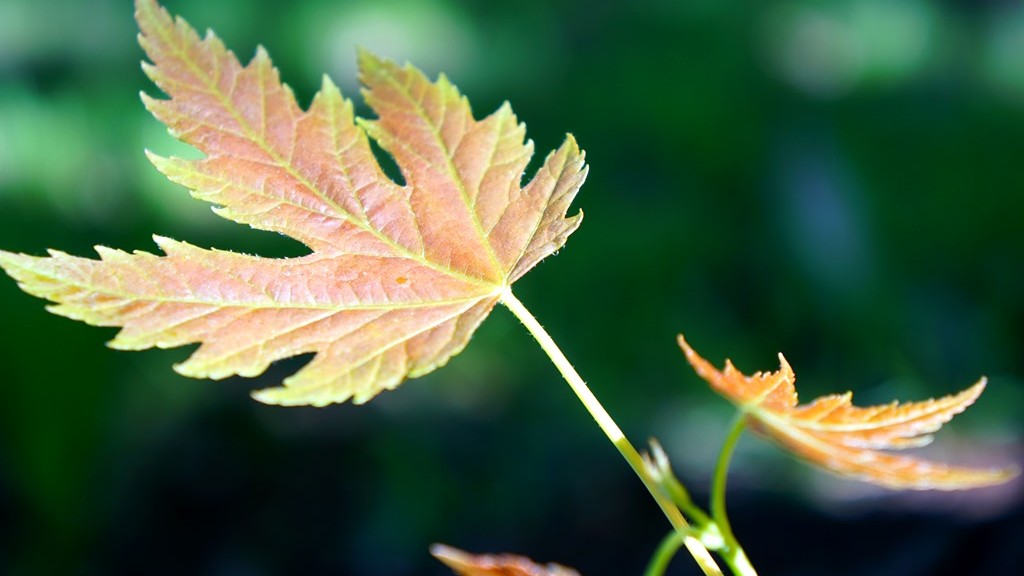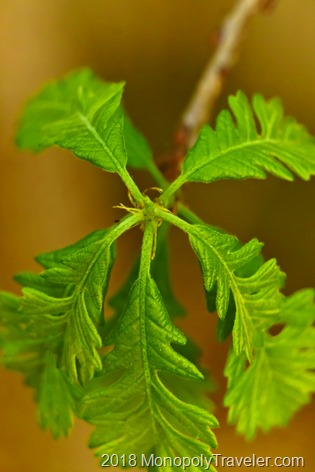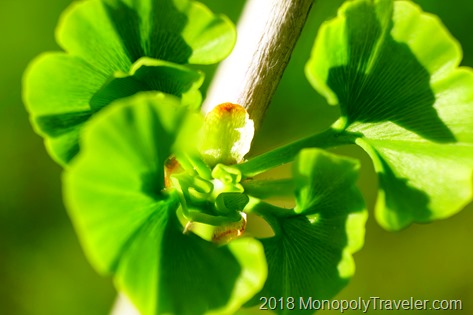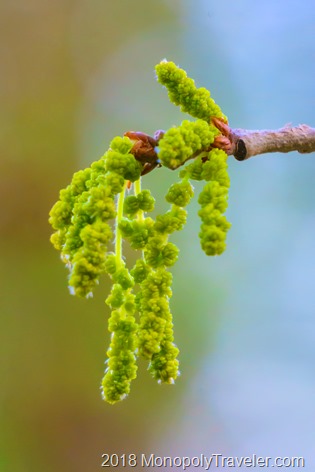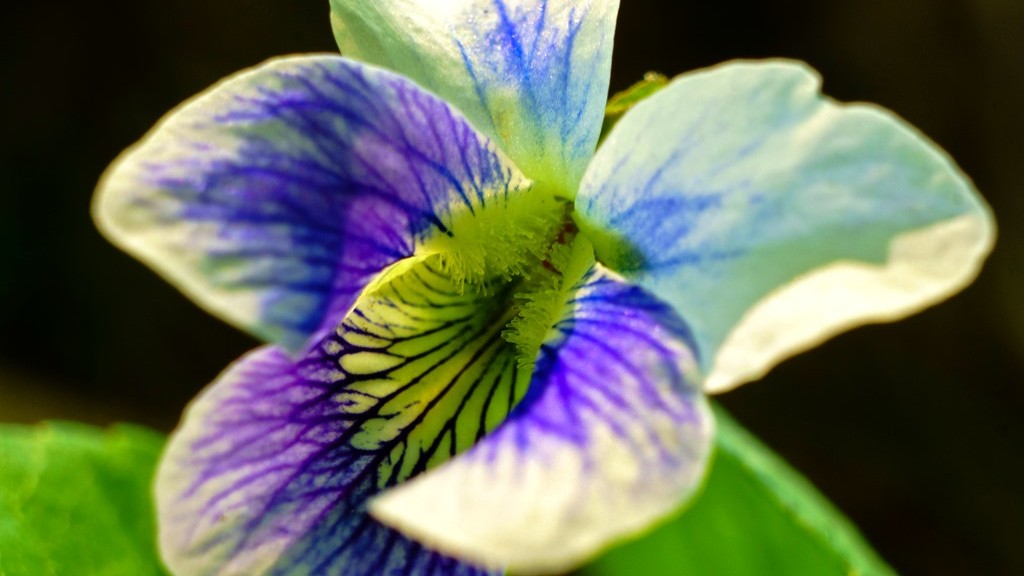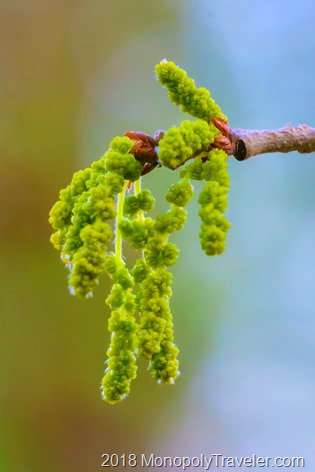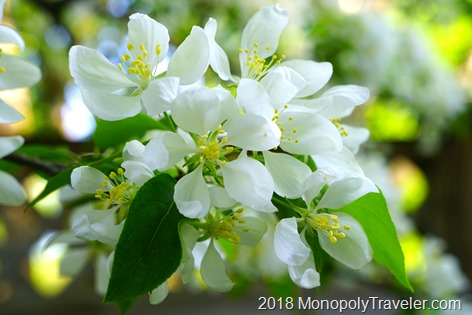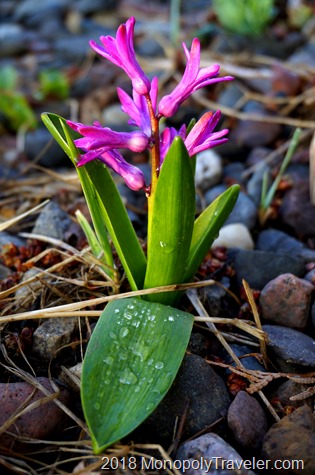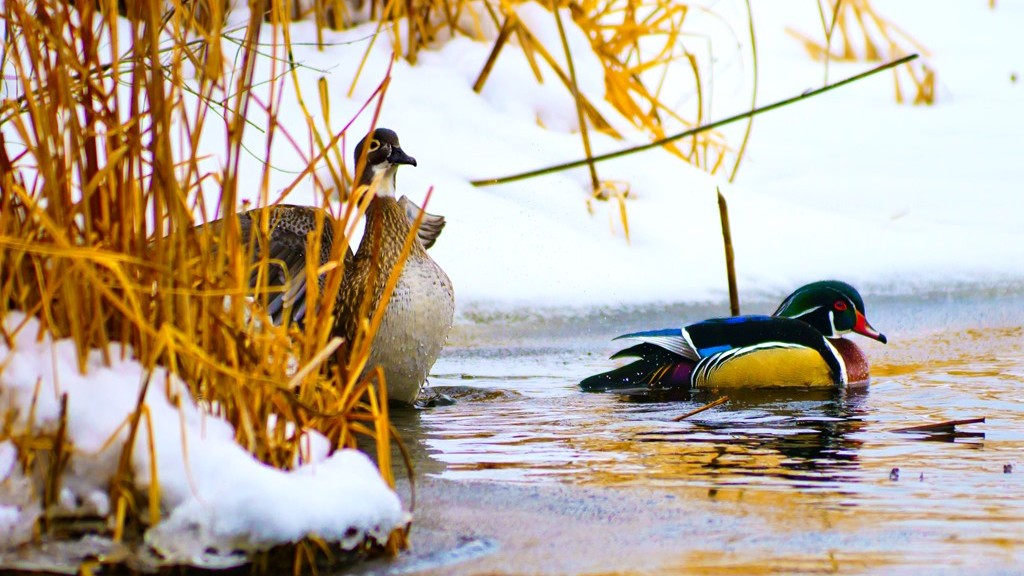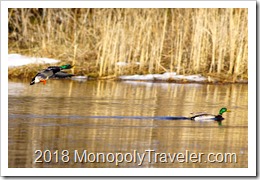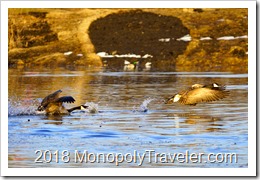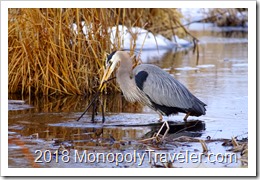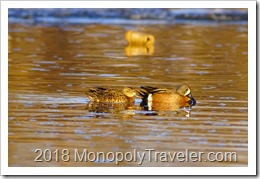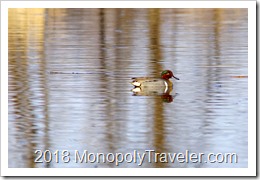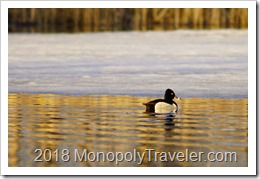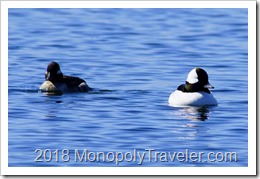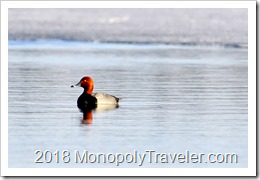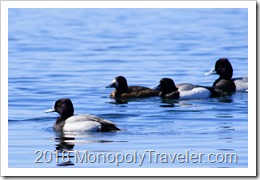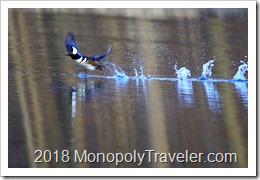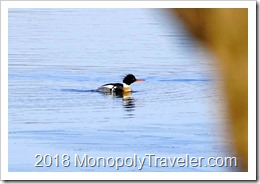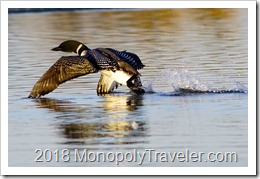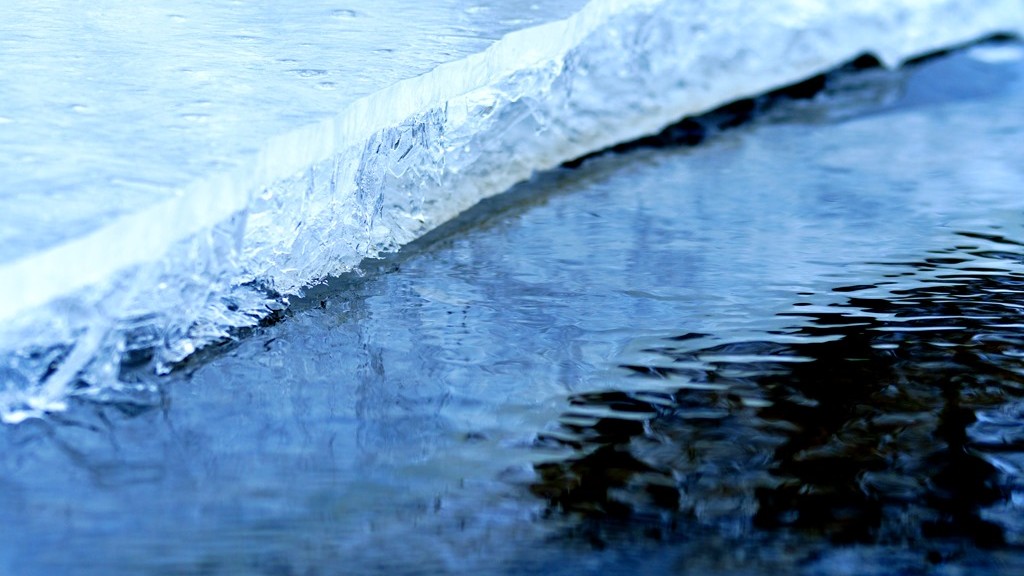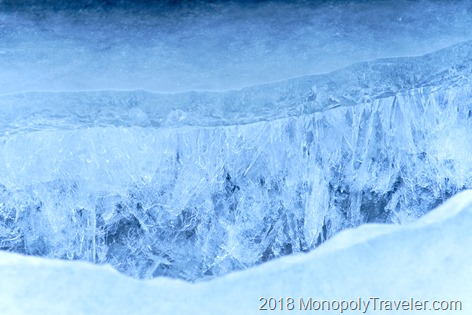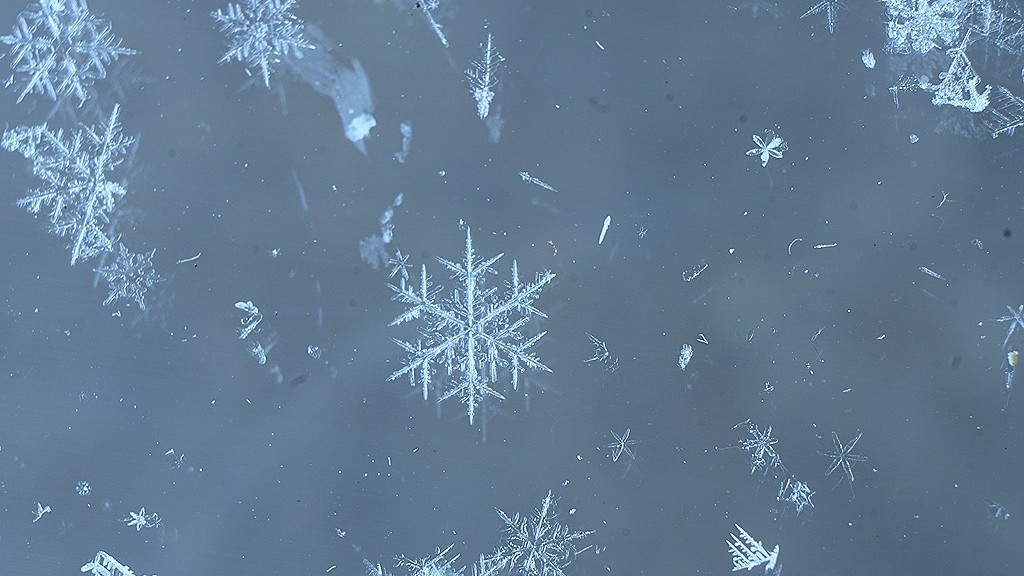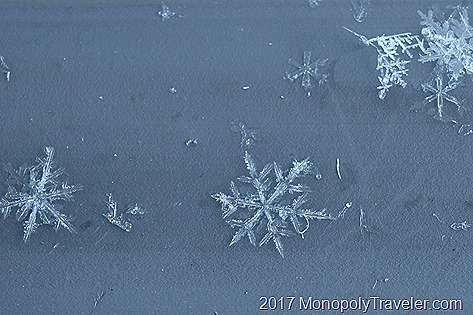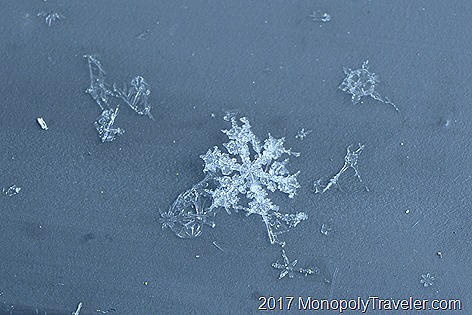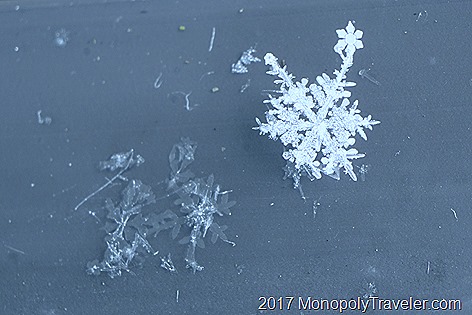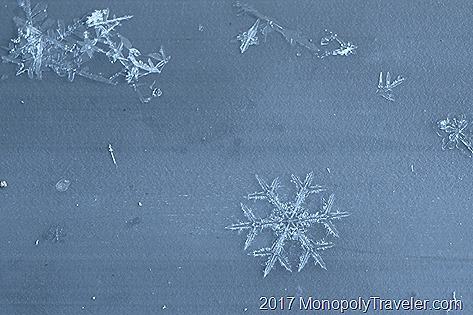An early morning in July I decided to get up before the sun and take the camera hoping for an amazing sunrise. The sunrise was nice but not as spectacular as I’d hoped so I continued on to another place hoping for a few wildlife shots to make the morning worth getting up for. I decided to peak in at a little shallow pond close by and spotted a great blue heron fishing ahead of me. I think we spotted each other about the same time although I’m sure the heron heard me long before that. Usually this would be the point which the heron would fly off but there must have been ample food here as an incentive to remain even though I was there. Kneeling down and pulling off my backpack as quietly as possible I changed lenses on the camera and got it set up on a tripod for some steady shots of this heron. I’ve photographed herons before but still enjoy watching them move and fish in shallow water.
Fortunately this heron went about the business of getting breakfast while I slowly moved closer and got the camera in place for some better shots. While watching the great blue heron I began to notice another heron moving around. This one turned out to be a green heron. Typically I only see these from a distance before they fly away but this one also stayed allowing me to turn my camera on it. Over the next half hour or so I counted six green herons and one blue heron. It was a heron jackpot! For the next hour or so I remained in this spot photographing as these herons fished and moved around while the sun moved higher having a great time.
At first this little body of water remained shaded from the morning sunlight making clear pictures a bit of a challenge. Any amount of movement during the shot and it came out blurry. Fortunately herons are great at standing still for more than a few seconds so I could get some nice shots in this lower light. Over time the sun continued to rise in the sky illuminating these birds in some nice soft light making it much easier to photograph them and capture clear photos. With all of these herons it was difficult to decide which one to focus on but I would choose one or two closer together and just follow them with the lens snapping a photo when there was some activity to capture.
Before the sun fully spread into this little pond I was near there was a loud crash in a nearby forest like a tree had fallen. There was nothing visible from where I was so I don’t know what really happened but right after this crash there were some loud noises like animals having been startled. Almost a half hour later I heard something rustling around in the cattails and a raccoon popped out. This raccoon started paddling water towards it like it had lost something and was searching for it. After trying this in a few different places it eventually headed off allowing the herons to return to their fishing. It almost seemed as though the raccoons may have caused a tree or large branch to fall under their weight while climbing and this particular one was shaken up a bit and needed some water to calm down. That’s just my interpretation of what I saw. Probably a long ways from what was really happening.
As the morning continued these herons eventually caught enough for their morning meal and began to fly off to more secluded places as more people began to stir. I stayed until most of these herons were out of sight enjoying their antics while stalking their prey. They are rather agile birds contorting themselves into positions that seem both unnatural and quite painful. All of their efforts seem to pay off as they appeared to be more successful at catching fish than they missed. I’m always amazed that fish swim right underneath herons in a relatively short time span after those herons have moved to that spot. It seems like anytime there’s a shadow the fish disappear and don’t return for some time. Maybe it’s because people cast a much larger shadow.
After lunging into the water after a meal it’s entertaining to see the herons reaction. Usually they appear as though they accidentally fell into the water and begin drying off in disgust. Maybe they’re just irritated they had to go all the way into the water in order to catch the fish closest to them requiring more effort instead of a quick jab with the beak and food is served. Once they emerge from the water they hurry for a place to dry off by shaking and twisting their whole bodies. Nearing the completion of drying they fluff their feathers creating this big fuzz ball vaguely resembling a heron. They then work for the next few minutes preening and placing all of those feathers back into place before continuing to hunt for the next portion of their meal.
Eventually all of the herons either left or moved out of sight so I packed up my gear and left as well. Besides there were getting to be too many people moving around for me also. The sunrise may have been a bust for photographing but the herons made if a fun time and worth waking before the sun on a Saturday in July. Hopefully there will be more opportunities to capture a beautiful sunrise.

